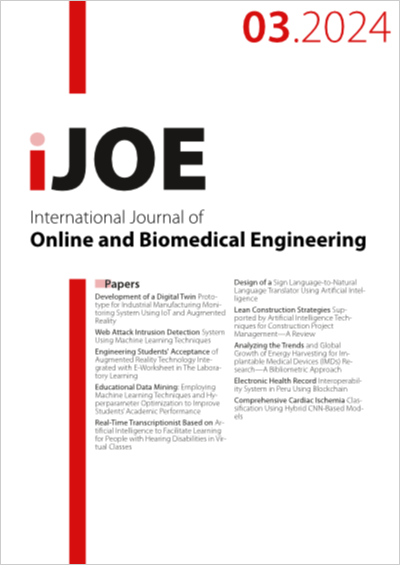Real-Time Transcriptionist Based on Artificial Intelligence to Facilitate Learning for People with Hearing Disabilities in Virtual Classes
DOI:
https://doi.org/10.3991/ijoe.v20i03.46811Keywords:
Learning, education, deaf students, transcriptionist, artificial Intelligence, hearing impairmentAbstract
Schools have historically been ill-prepared to cater to the needs of deaf students at the elementary and secondary levels. This leads to communication difficulties that impact the learning process for each individual. During the recent COVID-19 pandemic, educational institutions for deaf students faced difficulties in providing effective teaching to children and youth. It is important to emphasize that education is fundamental for all individuals, without exception, as acquiring literacy skills enables them to lead a more fulfilling life. In this context, our research aims to investigate how the use of a computer tool can enhance communication for deaf students in a virtual environment. The methodology used involved the use of a checklist to gather data from each participant’s evaluation. The post-test yielded favorable results, thanks to the statistical analysis employed in the research. In conclusion, it has been determined that a real-time transcriber facilitates learning, leading to improved educational outcomes for deaf students.
Downloads
Published
How to Cite
Issue
Section
License
Copyright (c) 2023 Orlando Iparraguirre-Villanueva; Christian Ovalle, Isaac Vallejos García , Franco Zapata Berrios

This work is licensed under a Creative Commons Attribution 4.0 International License.



